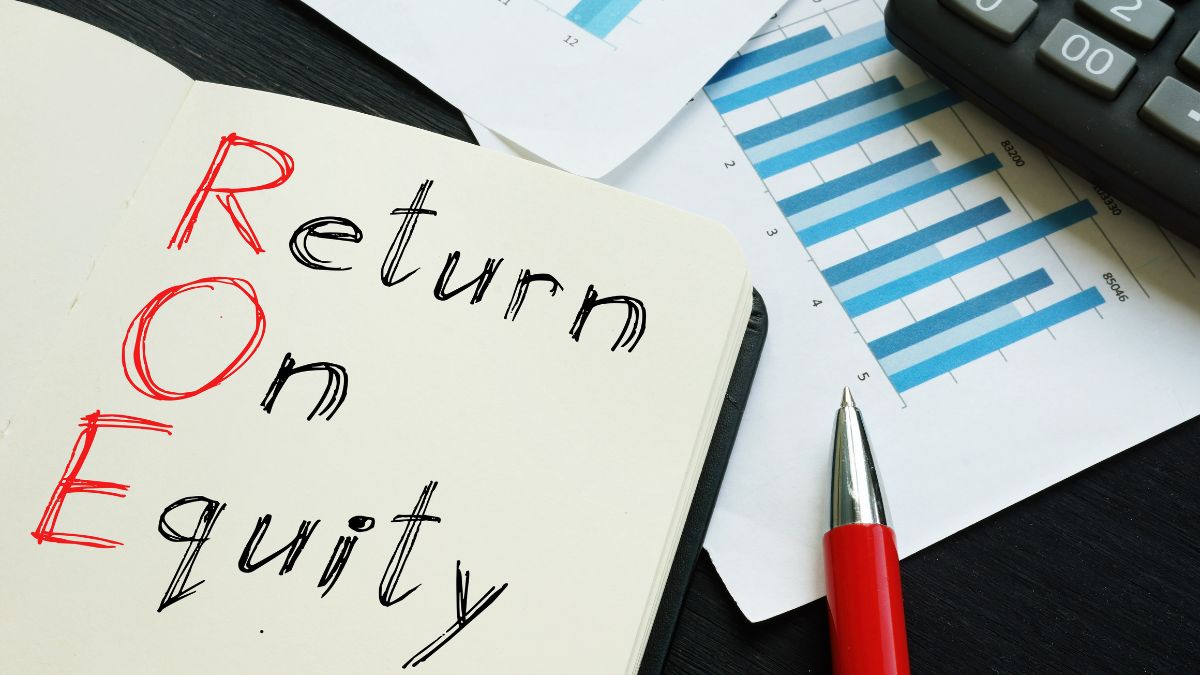Return on Equity (ROE) is one of the most important profitability ratios that investors track to assess how efficiently a company is using its shareholders’ capital to generate profits.
In simple terms, ROE answers this question:
“For every rupee invested by shareholders, how much profit is the company generating?”
What is ROE?
Formula:
ROE = (Net Profit / Shareholders’ Equity) × 100
It’s expressed as a percentage.
For example:
If a company earns Rs 200 crore in net profit and has Rs 1,000 crore in equity, then:
ROE = (200 ÷ 1,000) × 100 = 20%
This means:
For every Rs 1 of shareholder money, the company generates 20 paise in profit annually.
Why is ROE important?
-
Measures profitability from shareholders’ perspective
A higher ROE means the company is making good use of investors’ money. -
Helps in stock comparisons
Investors use ROE to compare profitability across companies in the same sector. -
Indicates management efficiency
It shows how well the management is using the company’s net assets to create profits.
What is a good ROE?
It depends on the industry, but here’s a general benchmark:
| Industry | Good ROE Range |
|---|---|
| FMCG, Consumer Goods | 20% and above |
| IT and Technology | 15% to 25% |
| Banks and Financials | 10% to 20% (due to regulatory capital requirements) |
| Infrastructure, Utilities | 8% to 15% |
Key point:
Sectors with low capital needs like FMCG tend to have high ROE, while asset-heavy industries like power and infrastructure generally have lower ROEs.
Real-life example:
| Company | Net Profit (Rs crore) | Shareholders’ Equity (Rs crore) | ROE |
|---|---|---|---|
| HUL | 9,500 | 39,000 | 24.3% |
| Infosys | 25,800 | 1,20,000 | 21.5% |
| NTPC | 18,000 | 1,20,000 | 15% |
-
HUL and Infosys deliver high ROE due to high margins and low capital needs.
-
NTPC has lower ROE because it operates in a capital-intensive sector.
Things to watch while using ROE:
-
High debt can artificially inflate ROE
If a company borrows heavily, equity shrinks relative to profits, making ROE look better. Check debt-to-equity ratio along with ROE for full picture. -
Compare within industry
A 15% ROE in utilities may be excellent, but poor in consumer goods. -
Track ROE trend over years
A falling ROE over 3-5 years could signal declining profitability. -
Check consistency
A one-time profit spike shouldn’t be mistaken for sustainable high ROE.
ROE vs. ROCE: What’s the difference?
| Metric | Measures | Good for analyzing |
|---|---|---|
| ROE | Profitability relative to equity only | Shareholder returns |
| ROCE (Return on Capital Employed) | Profitability relative to total capital (equity + debt) | Overall capital efficiency |
Final takeaway:
ROE tells you how well a company turns investor money into profit.
It’s a key indicator for long-term investors, especially when comparing companies within the same sector.
For better analysis, always pair ROE with other ratios like Debt-to-Equity and ROCE.


